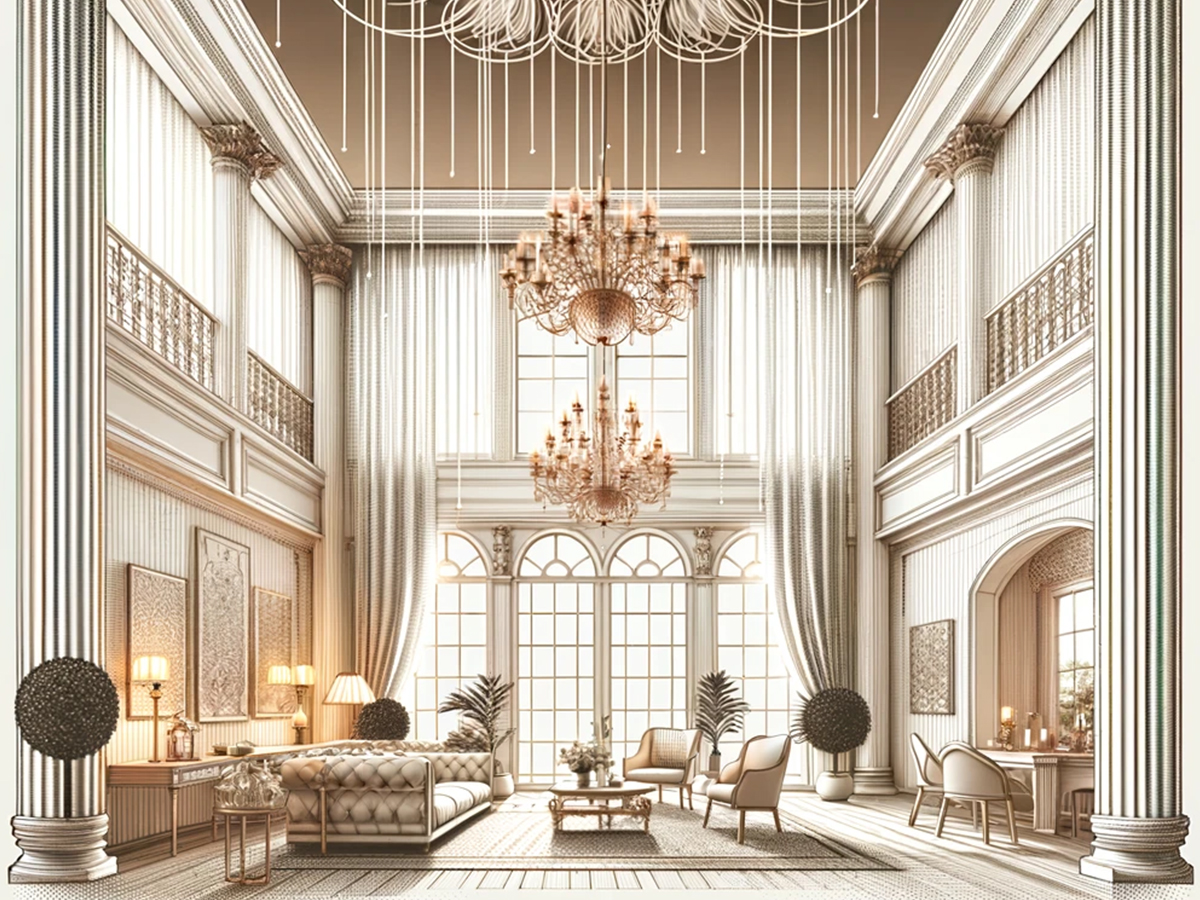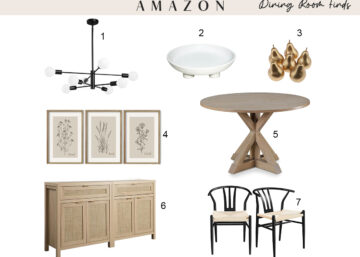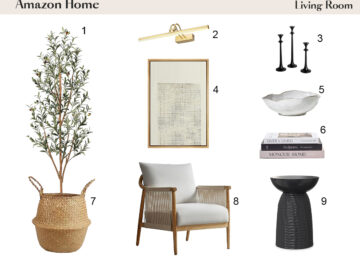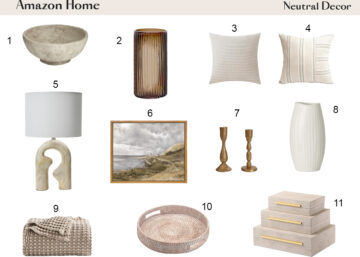The Impact of High Ceilings: Design Tips and Ideas
The Psychological and Aesthetic Benefits of High Ceilings
Enhancing Perception of Space
One of the most profound impacts of high ceilings is their ability to alter the perception of space. Rooms with high ceilings inherently feel larger and more open, creating a sense of freedom and expansiveness. This is particularly beneficial in urban environments where square footage is often limited. The vertical space can counteract the confines of a smaller footprint, making even modestly sized rooms feel grand and luxurious.
From a psychological perspective, the feeling of openness associated with high ceilings can reduce feelings of confinement and claustrophobia, promoting a more relaxed and comfortable environment. This is crucial in spaces where people spend a significant amount of time, such as offices or living rooms. The heightened sense of space can also encourage creativity and free-thinking, as it breaks away from the restrictive nature of low-ceilinged rooms.
Maximizing Natural Light
High ceilings provide an excellent opportunity to maximize natural light, which has numerous psychological and aesthetic benefits. Large windows and skylights can be incorporated into the design to allow more sunlight to flood into the room. Natural light is known to enhance mood, increase productivity, and improve overall well-being. It also has the added benefit of reducing the need for artificial lighting, which can be both energy-efficient and cost-effective.
The interplay of light and shadow in a room with high ceilings can create dynamic and visually interesting spaces. Sunlight streaming through tall windows can highlight architectural details, create a sense of depth, and bring warmth to the interiors. This natural illumination can make a space feel more welcoming and vibrant, enhancing the overall aesthetic appeal.
Creating a Sense of Grandeur
The grandeur of high ceilings is undeniable. They evoke a sense of awe and elegance, transforming ordinary spaces into extraordinary ones. This sense of grandeur can be particularly impactful in entryways, living rooms, and other areas where first impressions are important. The height allows for dramatic design elements such as grand chandeliers, tall sculptures, and expansive art pieces that would be overwhelming in rooms with standard ceiling heights.
High ceilings can also give a space a timeless and classic appeal. Architectural styles that feature high ceilings, such as Victorian or Gothic, are often associated with sophistication and luxury. Even in contemporary designs, the vertical space can be used to create a minimalist yet impactful aesthetic that emphasizes clean lines and open space.
Improving Air Circulation and Comfort
Beyond aesthetics, high ceilings can contribute to better air circulation and overall comfort in a space. Warm air rises, and rooms with high ceilings can create a more comfortable living environment by keeping the lower levels cooler. This can be particularly advantageous in warmer climates. Additionally, ceiling fans can be strategically placed to enhance airflow and maintain a pleasant temperature throughout the room.
Encouraging Creativity and Innovation
High ceilings are not just a physical feature; they can also inspire creativity and innovation in design. The additional vertical space provides opportunities to experiment with unique design elements and unconventional solutions. For example, designers can play with different levels of lighting, incorporate loft spaces, or create multi-functional areas that utilize the height in creative ways. This flexibility can result in spaces that are not only beautiful but also highly functional and tailored to the specific needs of the occupants.
Psychological Impact on Occupants
The psychological impact of high ceilings extends beyond the immediate aesthetic benefits. Studies have shown that people tend to feel more liberated and less constrained in rooms with higher ceilings. This can lead to increased cognitive functioning, better problem-solving abilities, and a greater sense of well-being. For businesses, this can translate into improved employee performance and satisfaction. For homeowners, it can mean a more peaceful and enjoyable living environment.
Design Strategies for High Ceilings
Proportional Furniture and Decor
When working with high ceilings, it’s crucial to maintain a sense of balance and proportion within the space. Choosing furniture and decor that complement the vertical expanse is essential. Oversized furniture pieces, such as large sofas, tall bookcases, and substantial dining tables, can help ground the room and prevent it from feeling empty or cavernous. Similarly, selecting tall decor items like floor lamps, large vases, and elongated artworks can draw the eye upward and emphasize the room’s height without overwhelming it.
Incorporating furniture with strong vertical lines can further enhance the sense of height. For instance, tall headboards in bedrooms, vertical shelving units in living rooms, and high-backed chairs in dining areas can all contribute to a cohesive and harmonious design. This approach ensures that the furniture feels integrated within the space, rather than dwarfed by the towering ceilings.
Utilizing Vertical Space
High ceilings provide a unique opportunity to utilize vertical space in creative and functional ways. One effective strategy is to install tall shelves or bookcases that extend to the ceiling. This not only maximizes storage but also draws the eye upward, highlighting the room’s height. In kitchens, floor-to-ceiling cabinetry can offer additional storage and a sleek, modern look.
Another innovative idea is to incorporate vertical gardens or living walls. These can bring a touch of nature indoors, improve air quality, and add a visually stunning element to the space. For a dramatic effect, consider hanging large, statement-making light fixtures such as chandeliers or pendant lights. These can serve as focal points and add a layer of sophistication to the room.
Layered Lighting Techniques
Lighting plays a crucial role in high-ceilinged spaces, both in terms of functionality and aesthetics. Layered lighting techniques can help create a well-lit, inviting environment. Start with ambient lighting, such as recessed lights or track lighting, to provide overall illumination. Next, add task lighting in areas where specific activities take place, such as reading nooks, kitchen islands, or workspaces. Finally, incorporate accent lighting to highlight architectural features, artwork, or decorative elements.
Wall sconces can be particularly effective in high-ceilinged rooms, as they add both light and visual interest to the vertical space. Consider placing them at varying heights to create a dynamic look. Additionally, using dimmers and smart lighting systems allows for greater control over the ambiance, enabling you to adjust the lighting to suit different moods and occasions.
Architectural Elements and Moldings
Architectural elements and moldings can add character and depth to high-ceilinged spaces. Crown moldings, ceiling medallions, and coffered ceilings are traditional options that can enhance the room’s elegance and provide a sense of structure. These elements can be painted in contrasting colors to add visual interest or kept in the same hue as the ceiling for a more subtle effect.
For a contemporary twist, consider exposed beams or industrial-style ductwork. These features can add texture and an edgy aesthetic to the room. Another option is to use wallpaper or paint treatments to create an accent wall that extends to the ceiling, adding a pop of color or pattern that draws attention to the vertical space.
Integrating Mezzanines and Lofts
High ceilings offer the possibility of creating additional functional areas through the integration of mezzanines or lofts. This is particularly useful in small apartments or homes where space is at a premium. A mezzanine can serve as an extra bedroom, office, or lounge area, effectively doubling the usable space within the room. Ensure that the design of the mezzanine complements the overall aesthetic of the room, using materials and colors that harmonize with the existing decor.
Creating Focal Points
In rooms with high ceilings, it’s important to create focal points that anchor the space and provide visual interest. A large, statement piece of art or a bold, colorful rug can serve as an effective focal point. Alternatively, a dramatic fireplace or a custom-built shelving unit can draw the eye and add personality to the room. These focal points help to ground the design and prevent the space from feeling too vast or impersonal.
Room-Specific Design Tips for High Ceilings
Living Rooms: Creating Inviting and Comfortable Spaces
In living rooms, high ceilings can be both a blessing and a challenge. To create an inviting and comfortable atmosphere, it is essential to consider both the scale and the functionality of the space.
Strategic Furniture Arrangement
Arranging furniture in a way that fosters conversation and connection is crucial. Use large, comfortable seating pieces like oversized sofas and sectionals to fill the space appropriately. Placing furniture in intimate groupings can make the room feel more cozy and less cavernous. Incorporate area rugs to define seating areas and add warmth underfoot.
Highlighting Vertical Elements
Emphasize the height of the room with tall bookcases or built-in shelves. These can serve as both storage and display areas, showcasing books, art, and decor items. Additionally, consider a gallery wall that extends from floor to ceiling, creating a dramatic visual impact. Large-scale artwork or a series of smaller pieces arranged vertically can draw the eye upward, enhancing the sense of space.
Lighting Layers and Focal Points
Incorporate a mix of lighting sources to create a well-lit environment. Use a combination of ambient, task, and accent lighting to highlight different areas of the room. A grand chandelier or a series of pendant lights can serve as a focal point, while wall sconces and floor lamps provide additional layers of light. To add warmth and a sense of intimacy, consider using dimmable lights and placing them at different heights.
Kitchens and Dining Areas: Combining Functionality and Style
High ceilings in kitchens and dining areas offer the opportunity to combine functionality with style, creating spaces that are both practical and visually stunning.
Tall Cabinetry and Storage Solutions
Maximize storage by installing tall cabinetry that reaches up to the ceiling. This not only provides ample storage space but also creates a sleek, streamlined look. Use the upper cabinets for less frequently used items and incorporate a rolling ladder or step stool for easy access. Open shelving can also be used to display beautiful dishware and decorative items, adding personality to the kitchen.
Statement Lighting
In the dining area, a statement light fixture can become the centerpiece of the room. A large chandelier or a cluster of pendant lights can provide ample illumination while adding a touch of elegance. In the kitchen, consider installing pendant lights over the island or under-cabinet lighting to brighten workspaces.
Ventilation and Acoustic Solutions
High ceilings can sometimes result in poor acoustics and ventilation challenges. To address these issues, incorporate sound-absorbing materials such as acoustic panels or soft furnishings like rugs and curtains. Ensure proper ventilation by installing a high-capacity range hood and using ceiling fans to circulate air effectively.
Bedrooms: Creating Cozy and Serene Retreats
In bedrooms, high ceilings can contribute to a serene and restful atmosphere, provided the design elements are chosen carefully.
Canopy Beds and Vertical Decor
A canopy bed can make a dramatic statement in a high-ceilinged bedroom, adding a sense of luxury and intimacy. Choose a design that complements the room’s aesthetic, whether it’s a traditional four-poster bed or a modern, minimalist frame. Use tall headboards or wall-mounted fabric panels to add height and texture behind the bed.
Layered Textiles and Soft Furnishings
To create a cozy and inviting retreat, layer textiles and soft furnishings. Use plush rugs, thick curtains, and an abundance of pillows and throws to add warmth and comfort. Opt for fabrics with rich textures and patterns to create visual interest and soften the room’s overall appearance.
Ambient and Task Lighting
Incorporate a variety of lighting options to create a versatile and relaxing atmosphere. Use bedside lamps for reading, wall sconces for ambient lighting, and a statement chandelier or pendant light for overall illumination. Dimmable lights can help set the mood for relaxation and rest.
Bathrooms: Transforming Functional Spaces into Spa-Like Sanctuaries
High ceilings in bathrooms offer the opportunity to create spa-like sanctuaries that are both functional and luxurious.
Vertical Storage and Design Features
Utilize the vertical space for storage by installing tall cabinets or shelving units. These can provide ample storage for towels, toiletries, and other essentials. Consider adding a ladder shelf or wall-mounted storage solution to keep items within easy reach.
Skylights and Large Windows
Maximize natural light by incorporating skylights or large windows. Natural light can make a bathroom feel more open and airy, enhancing the overall spa-like experience. Ensure privacy by using frosted glass or strategically placed window treatments.
Statement Fixtures and Finishes
Choose statement fixtures such as freestanding bathtubs or oversized mirrors to create focal points within the bathroom. High ceilings allow for the installation of larger fixtures without overwhelming the space. Use luxurious materials like marble, stone, and high-quality tiles to add a sense of opulence.
Home Offices: Inspiring Creativity and Productivity
In-home offices, high ceilings can inspire creativity and enhance productivity by creating an environment that feels open and expansive.
Functional and Stylish Furniture
Select furniture that is both functional and stylish, such as a large desk with ample workspace and ergonomic seating. Use tall bookcases or shelving units to keep supplies and documents organized. Incorporate a comfortable seating area for reading or brainstorming sessions.
Incorporating Art and Personal Touches
Use the vertical space to display artwork, inspirational quotes, or personal mementos. This can make the office feel more personalized and motivating. Consider a large bulletin board or whiteboard for jotting down ideas and organizing tasks.
Optimal Lighting
Ensure the home office is well-lit with a combination of natural light and artificial lighting. Use desk lamps, floor lamps, and overhead lights to create a bright and inviting workspace. Consider adjustable lighting to reduce glare and eye strain.
Potential Challenges and Solutions
Heating and Cooling Efficiency
Challenge: Temperature Regulation
One of the primary challenges associated with high ceilings is maintaining efficient temperature regulation. Because warm air rises, rooms with high ceilings can become difficult to heat during the winter and challenging to cool in the summer. This can lead to increased energy consumption and higher utility bills.
Solution: Strategic HVAC Design
To address this issue, it is essential to invest in a well-designed HVAC system. Ceiling fans can help circulate air effectively, pushing warm air down in the winter and distributing cool air in the summer. Additionally, installing a programmable thermostat can allow for better temperature control throughout the day. Insulating the upper portions of the walls and ceiling can also help retain heat during colder months, reducing the overall energy burden.
Acoustic Considerations
Challenge: Echoes and Sound Control
High ceilings can create acoustic challenges, such as increased echoes and sound reverberation. This can make conversations difficult and create an uncomfortable auditory environment, particularly in larger rooms or open-plan spaces.
Solution: Sound-Absorbing Materials
To mitigate these issues, incorporate sound-absorbing materials into the design. This can include adding area rugs, heavy curtains, and upholstered furniture to help dampen sound. Acoustic panels or fabric-covered wall art can also be strategically placed to reduce echo. Utilizing soft furnishings and textured materials will not only enhance the aesthetic appeal but also improve the acoustics of the room.
Maintenance and Cleaning
Challenge: Accessibility for Cleaning and Maintenance
Maintaining high ceilings can be a logistical challenge, particularly when it comes to cleaning, dusting, and changing light fixtures. The height can make these tasks difficult and potentially unsafe without the right equipment.
Solution: Long-Handled Tools and Professional Services
Investing in long-handled cleaning tools can make it easier to reach high areas safely. For tasks that require more extensive work, such as changing light fixtures or deep cleaning, consider hiring professional cleaning services. Regular maintenance checks can prevent issues such as cobweb accumulation or dust build-up, ensuring the space remains clean and well-maintained.
Design Balance
Challenge: Maintaining Visual Balance
High ceilings can sometimes overwhelm a space if not balanced correctly with the rest of the room’s design elements. This can result in a space that feels disproportionate or incomplete.
Solution: Proportional Decor and Layered Design
To achieve a balanced look, incorporate decor and furniture that are proportionate to the room’s height. Use vertical elements like tall bookcases, large artwork, and statement light fixtures to draw the eye upward. Layered design elements, such as multi-level lighting and varied textures, can add depth and cohesion to the space, making it feel harmoniously designed rather than empty or overpowering.
Energy Consumption
Challenge: Increased Energy Use
High ceilings can contribute to higher energy consumption due to the larger volume of space that needs to be heated or cooled.
Solution: Energy-Efficient Solutions
Implement energy-efficient solutions to mitigate this challenge. Consider installing energy-efficient windows and doors to reduce heat loss. Utilizing LED lighting and energy-efficient appliances can also help lower energy consumption. Additionally, using smart home technology to monitor and control energy use can provide more precise management, helping to maintain comfort while minimizing energy expenditure.
Conclusion
Embracing the Vertical Dimension
High ceilings are more than just an architectural feature; they represent an opportunity to create spaces that are both visually stunning and functionally superior. By embracing the vertical dimension, designers and homeowners can transform ordinary rooms into extraordinary environments. Whether it’s through enhancing natural light, creating a sense of grandeur, or optimizing air circulation, high ceilings offer a multitude of benefits that go beyond mere aesthetics.
Strategic Design for Maximum Impact
As we have explored throughout this article, designing for high ceilings requires thoughtful planning and innovative strategies. By carefully selecting proportional furniture and decor, utilizing vertical space, and employing layered lighting techniques, you can ensure that the room feels cohesive and well-balanced. Additionally, incorporating architectural elements and creating focal points can add depth and character, making the most of the vertical space.
Addressing Challenges with Practical Solutions
While high ceilings present certain challenges, such as temperature regulation, acoustic control, and maintenance, these can be effectively managed with the right solutions. Investing in a well-designed HVAC system, incorporating sound-absorbing materials, and using long-handled cleaning tools or professional services are practical ways to address these issues. By implementing energy-efficient solutions, you can also mitigate the increased energy consumption often associated with high-ceilinged spaces.
Room-Specific Insights
Each room in a home or commercial space can benefit from tailored design strategies that make the most of high ceilings. From creating inviting living rooms and functional kitchens to designing serene bedrooms and spa-like bathrooms, the potential for innovative and impactful design is vast. Home offices, too, can become inspiring and productive environments by utilizing vertical space and incorporating personal touches.








